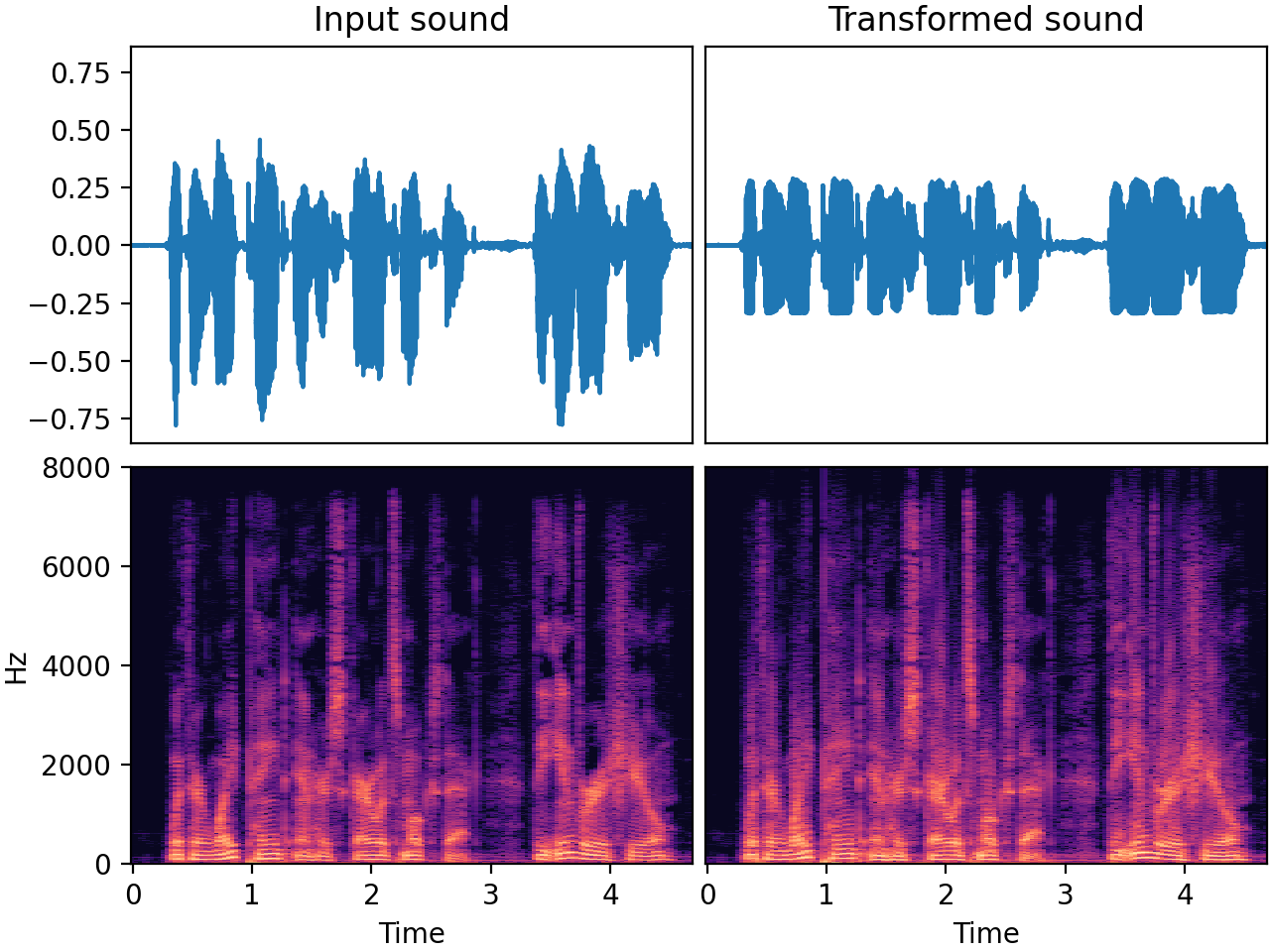TanhDistortion
Added in v0.19.0
Apply tanh (hyperbolic tangent) distortion to the audio. This technique is sometimes used for adding distortion to guitar recordings. The tanh() function can give a rounded "soft clipping" kind of distortion, and the distortion amount is proportional to the loudness of the input and the pre-gain. Tanh is symmetric, so the positive and negative parts of the signal are squashed in the same way. This transform can be useful as data augmentation because it adds harmonics. In other words, it changes the timbre of the sound.
See this page for examples: http://gdsp.hf.ntnu.no/lessons/3/17/
Input-output example
In this example, we apply tanh distortion with the distortion amount (think of it as a knob that goes from 0 to 1) set to 0.25

| Input sound | Transformed sound |
|---|---|
Usage example
from audiomentations import TanhDistortion
transform = TanhDistortion(
min_distortion=0.01,
max_distortion=0.7,
p=1.0
)
augmented_sound = transform(my_waveform_ndarray, sample_rate=16000)
TanhDistortion API
min_distortion:float• range: [0.0, 1.0]- Default:
0.01. Minimum "amount" of distortion to apply to the signal. max_distortion:float• range: [0.0, 1.0]- Default:
0.7. Maximum "amount" of distortion to apply to the signal. p:float• range: [0.0, 1.0]- Default:
0.5. The probability of applying this transform.